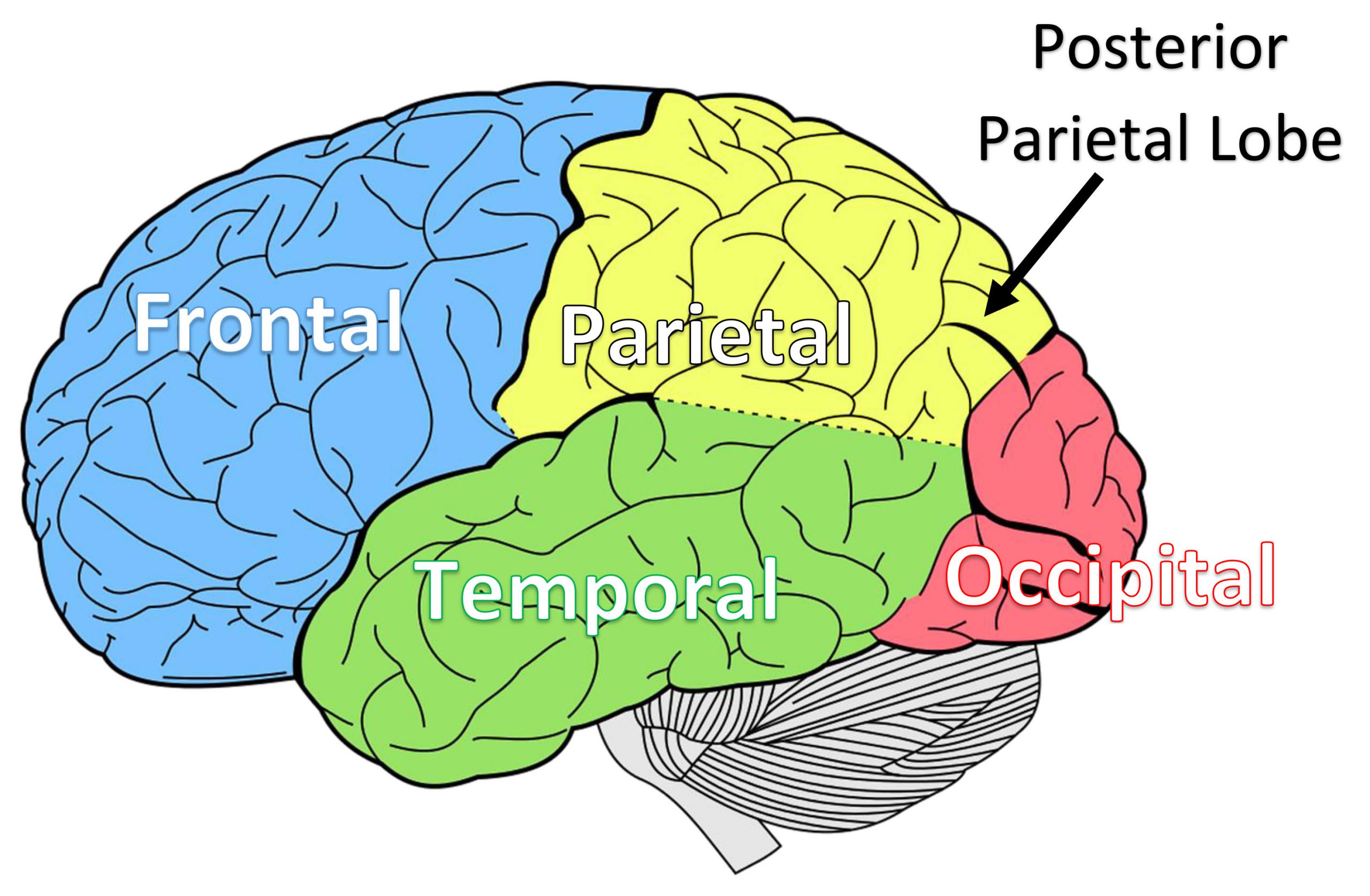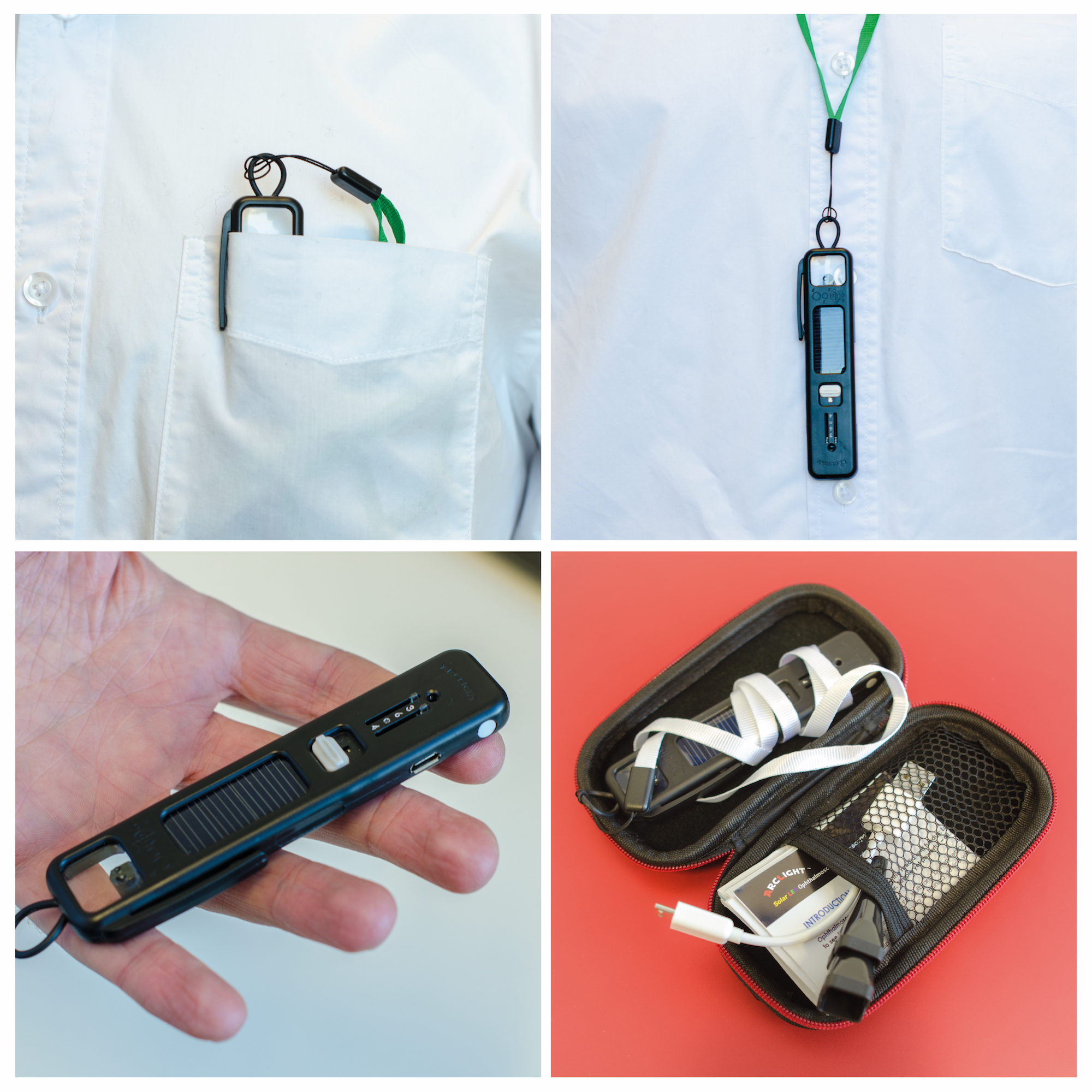Phase 1: Dorsal Stream Dysfunction CVI Experience
Question: Is it possible to show what it is like to have dorsal stream dysfunction? Dorsal streamdysfunction is one of the most common ways people are affected by cerebral visual impairment (CVI), particularly children. How is their experience of the world different from how people with typical visual experience the world?
There are many different types of CVIs affecting for example, how clearly we can see, how much we can see at one time and knowing what we are seeing.
Dorsal Stream Dysfunction is an umbrella term for a group of cerebral visual impairments degrading the way vision is created for us in a part of the brain called the posterior parietal lobes.
Dorsal stream dysfunctions are a group of cerebral visual impairments, brought about in the posterior (back of the) parietal lobes. The area is shown by the black arrow, on the diagram, one or both sides can be affected.
These cerebral visual impairments reduce/interfere with the ability to:
- Look for things, because less can be seen, for the most affected people meaning that only one thing can be seen at a time (called simultanagnostic vision)
- Visually reach for things, and move among things accurately (called optic ataxia)
- Find things, and so look at something someone else has pointed out (called apraxia of gaze).
Dorsal stream dysfunction is an umbrella term for a group of cerebral visual impairments.
For this project we were particularly interested in the effects this type of reduced visual attention, due to reduced function of the posterior parietal lobes, has on vision.
Able adults affected by this type of CVI have described to us what is visible to them. This is very different, from typical vision (see images and accounts under the references at the bottom of this page).
They describe their vision as being affected particularly by:
| 1 | Environmental Elements (Environment). How much their visual brain has to map (in the posterior parietal lobes), in terms of detail (clutter / complexity). Recognising that moving images and noise add further demands (because sound is mapped in the posterior parietal lobes too, so they compete for our attention). Where the brain has more to map, vision diminishes. |
| 2 | How they are Feeling (Feelings). Feeling well, comfortable, confident and in control definitely seems to help with vision. Feeling stressed, anxious, embarrassed, unsafe and vulnerable all appear to result in less being visible and recognisable. |
| 3 | Known / Unknown (Known). Whether they are somewhere known or unknown, is particularly important. Where somewhere already ‘known’ existing visual memories can ‘fill in the gaps’ in the scene, created by the posterior parietal lobes not working so well. This is particularly important when they are somewhere complex like a shopping centre. Known and unknown also includes people, routines, routes and processes. |
Project
Project aim
Previously (reference 2), photographs have been edited to show the differences between what is and is not seen for a person with dorsal stream dysfunction. These images, whilst useful, do not show the demands placed on the brain when things are moving. Life is not a still photograph, but constantly moving, even sitting still and turning creates movement. Every change and movement requires a process in the posterior parietal lobes to re-map, a bit like refreshing a computer screen, but many many times a second.
What must that be like and feel like for the person with dorsal stream dysfunction, where this part of their brain is not processing typically?
How is this different to typical vision? Not just in terms of visual differences, but also in terms of how it affects learning and how it makes people feel?
This is what we want to attempt show, through film.
Project requirements
- The expertise of people affected by dorsal stream dysfunction, particularly adults, diagnosed and able to articulate their experiences, and parents of children with the same types of visual difficulty. Many with this type of CVI are profoundly disabled, and are often left out of research because they can’t answer questions or follow directions due to their insufficient language. Through our close observations of those affected, we want in this project to try to convey what their worlds and difficulties are likely to be like too.
- Medical specialists with extensive experience and an expert understanding of the multiple conditions under the cerebral visual impairment umbrella.
- Technical experts (to create the computer generated simulations)
Project team
- University of St Andrews School of Medicine
- University of St Andrews School of Computer Science
- Cerebral Visual Impairment Society of Scotland (CVI Scotland)
Film content
From descriptions of how vision varies, we aimed to record video footage that would hopefully show these ranges, so we filmed in different locations:
- in a shop where there would be many demands on the posterior parietal map, and
- on an open beach with a few obstacles, where there would be far fewer demands.
We showed the footage to our volunteers with dorsal stream dysfunctions, and simply asked them to describe what they saw.
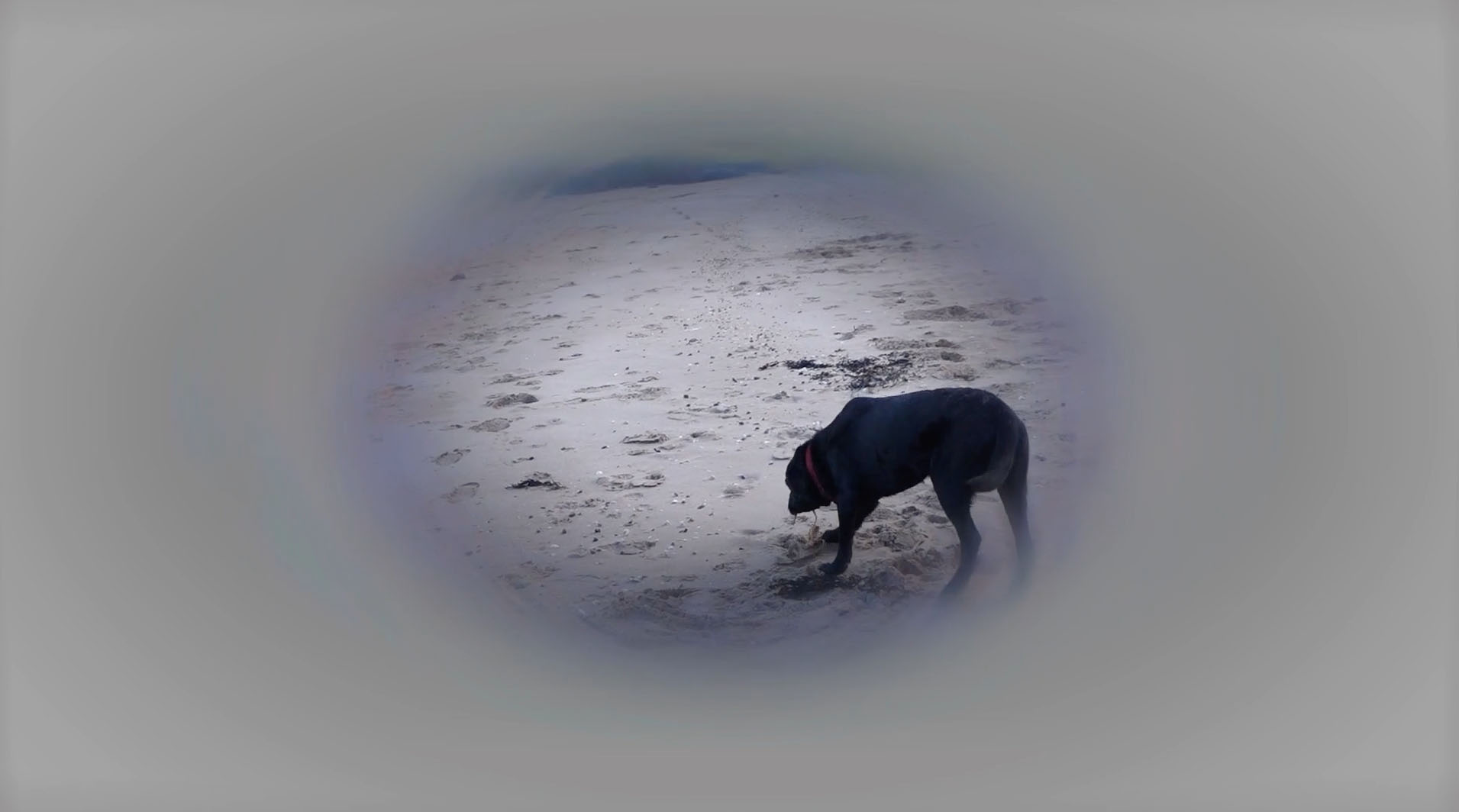
This photo (above) is from one of the films we made, where only a dog was being described as visible.
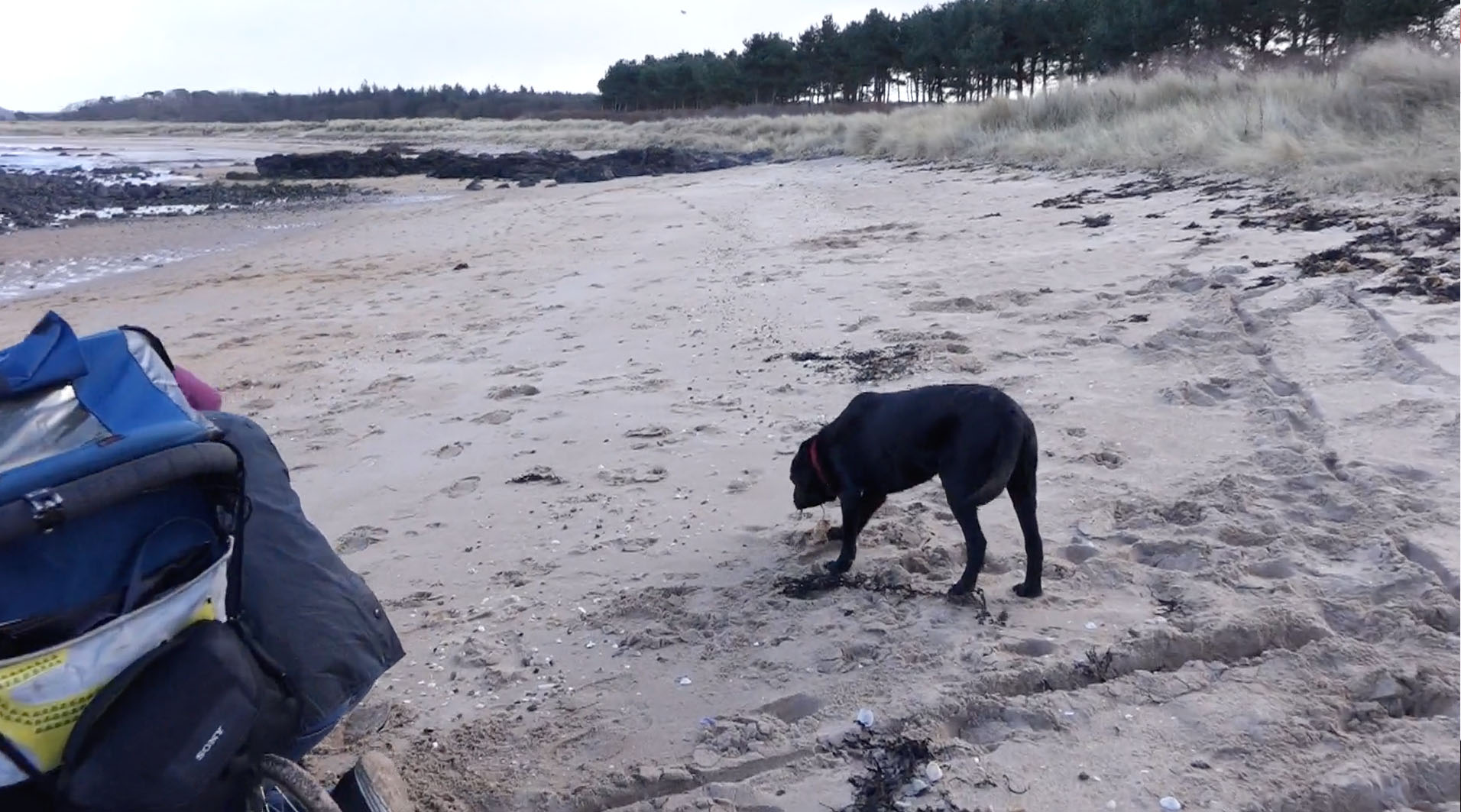
This is what they were looking at (above). The trees, chair, sand and grass were all unseen, only the dog was seen.
Seen and unseen
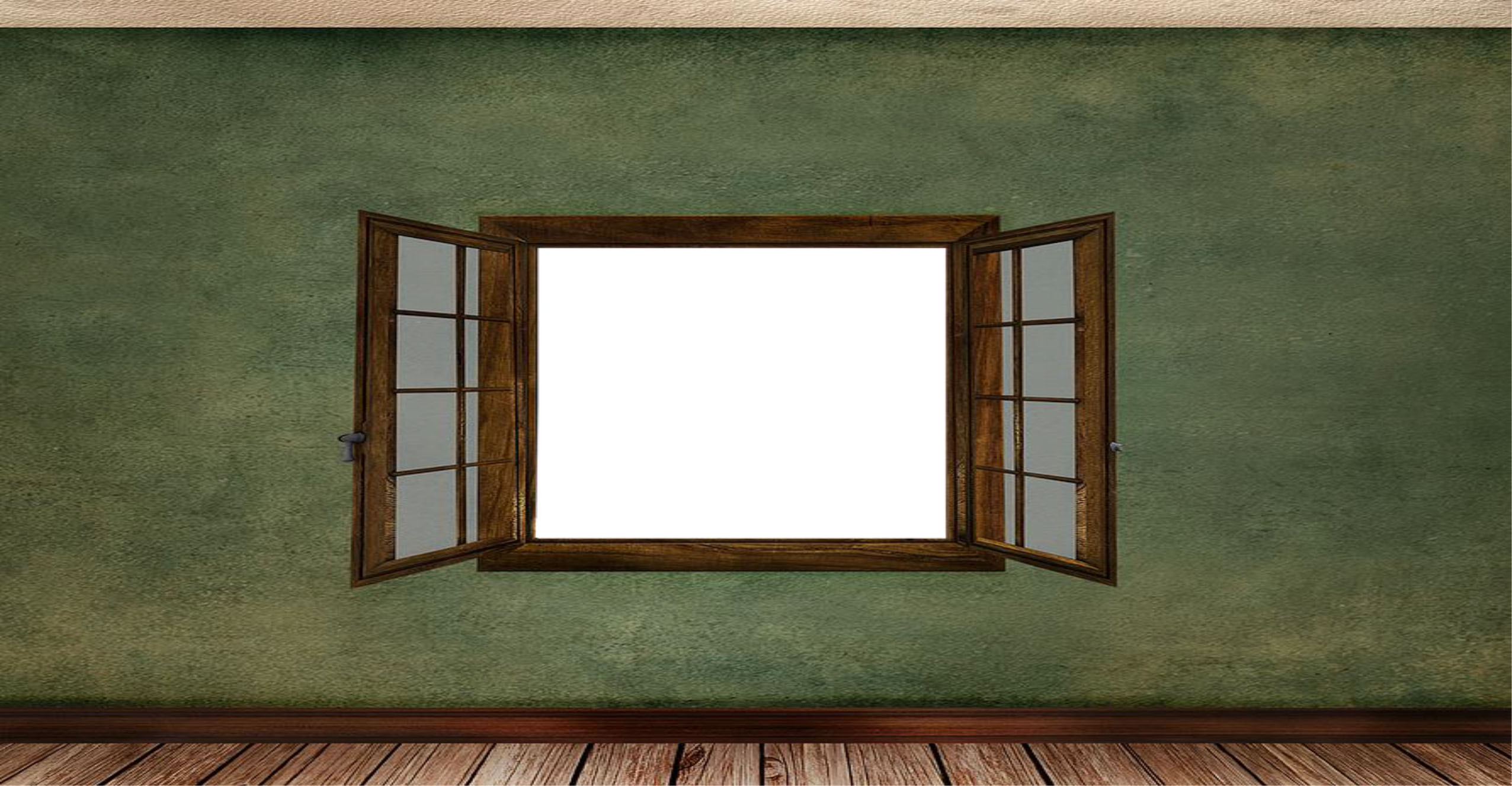
Imagine your visual field as a window, through which you see the world.
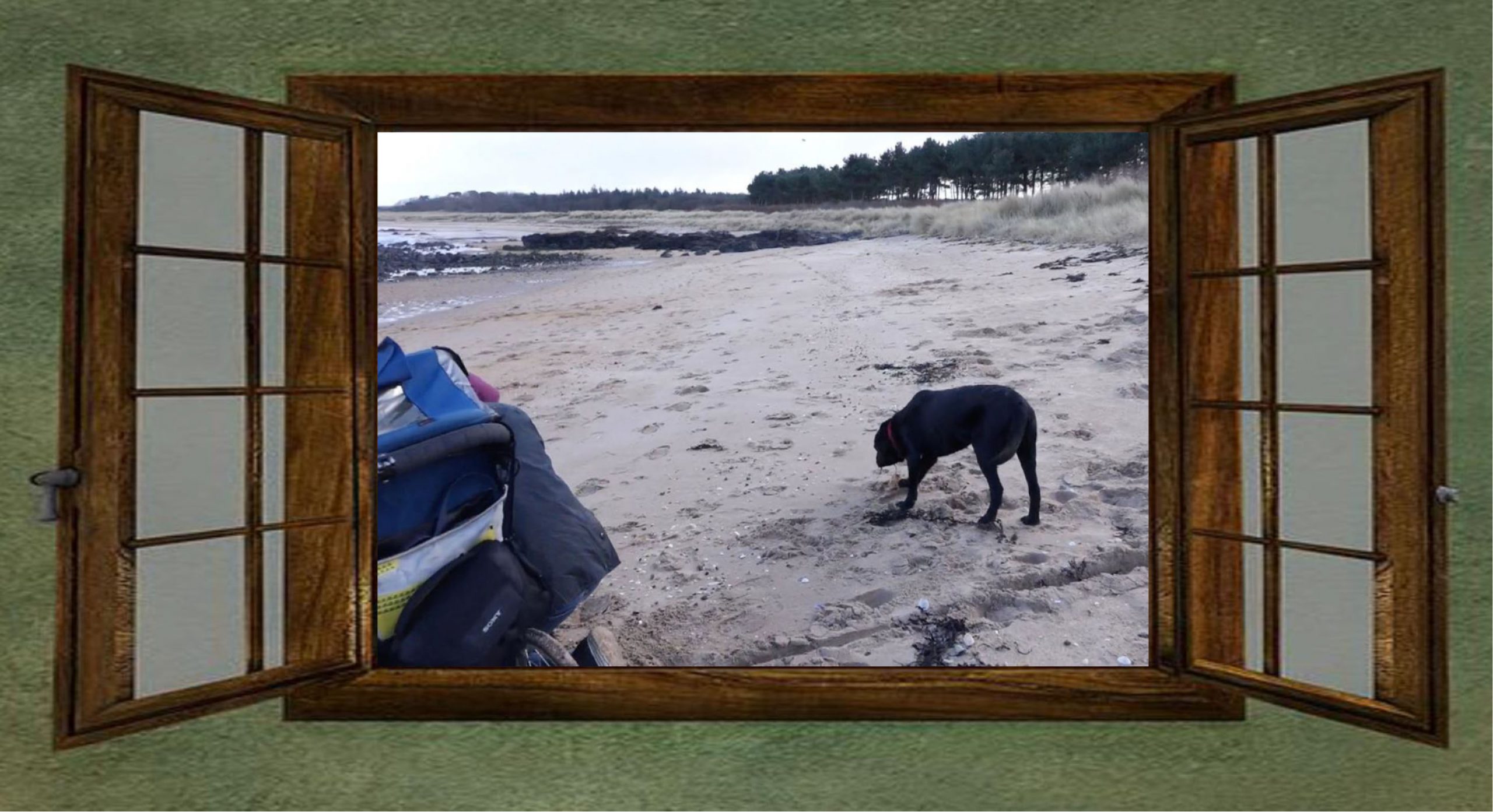
The person with dorsal stream dysfunction would seem to have a smaller than typical window, for much of the time.
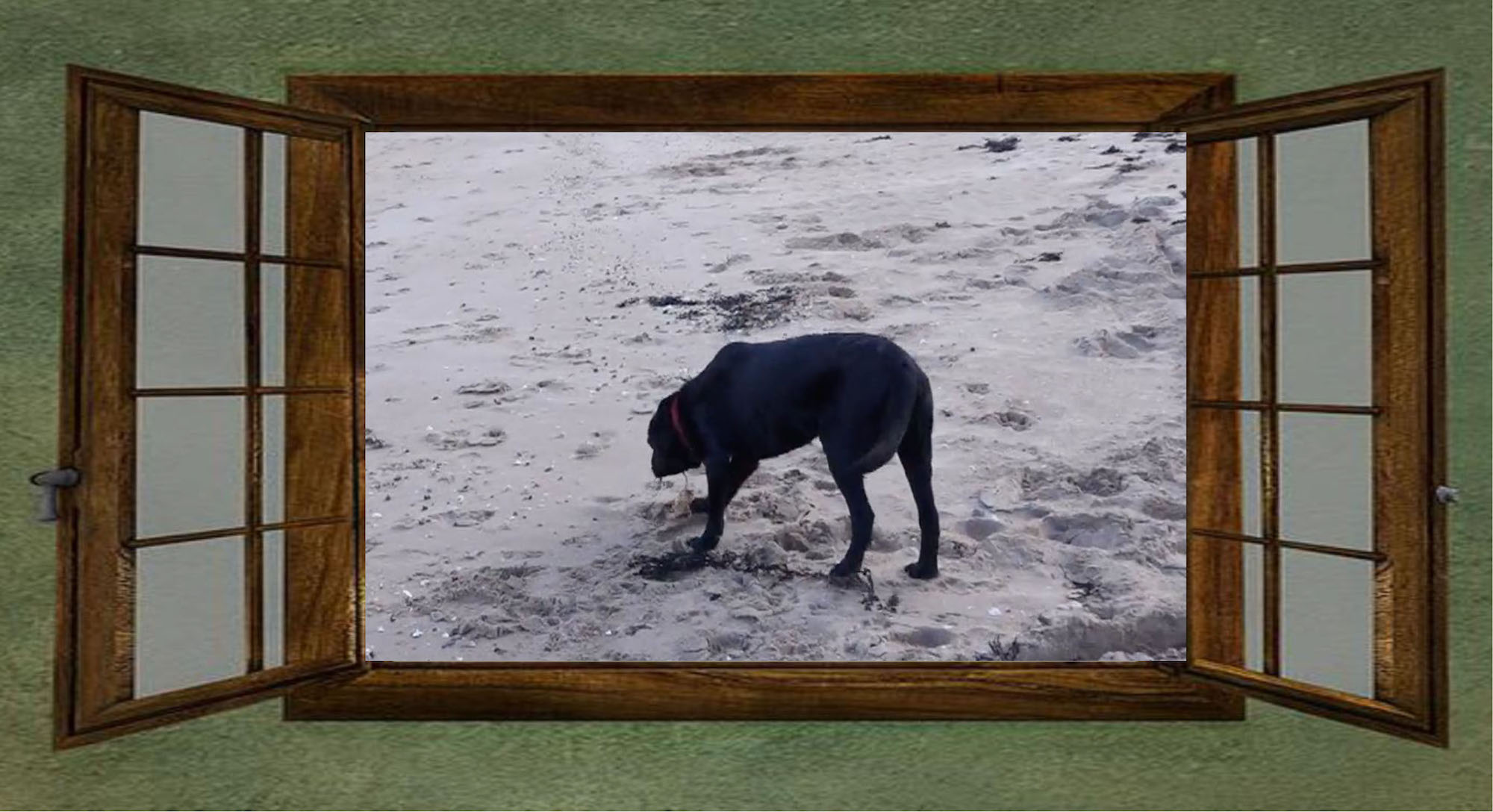
With dorsal stream dysfunction, the window of what is visible is often smaller than typical vision.
We wanted to show the difference between typical vision and this type of vision, and so what was not need has been illustrated with a grey mist. The grey mist represents what is not seen, because it is not visible.
Findings
We learned from our volunteers with dorsal stream dysfunction that where the visual scene is more complicated and more demanding, the window becomes smaller. And where the visual scene is simpler and less crowded, the window gets bigger.
So when looking at this part of the same film, having moved past the dog:
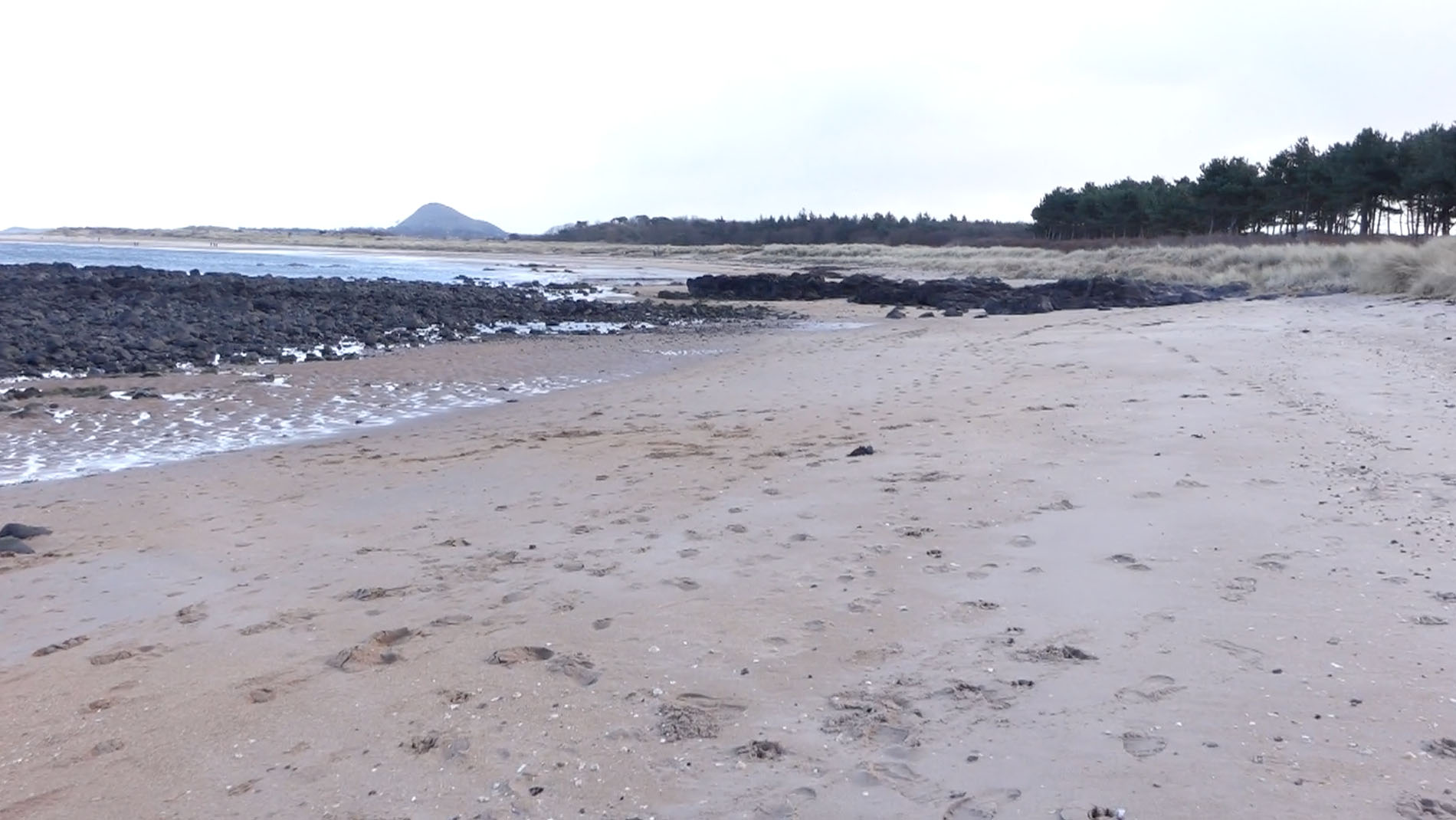
Our volunteers could describe much more, including the trees in the background, although…

Not all could see the hill in the background, which shows that from person to person there are differences, and some seem to be more affected than others by clutter and can see less.
Window Size
According to the descriptions people shared of what they could and could not see, the window size relates to how much is visible across the visual field, and it is this window that seems to vary.
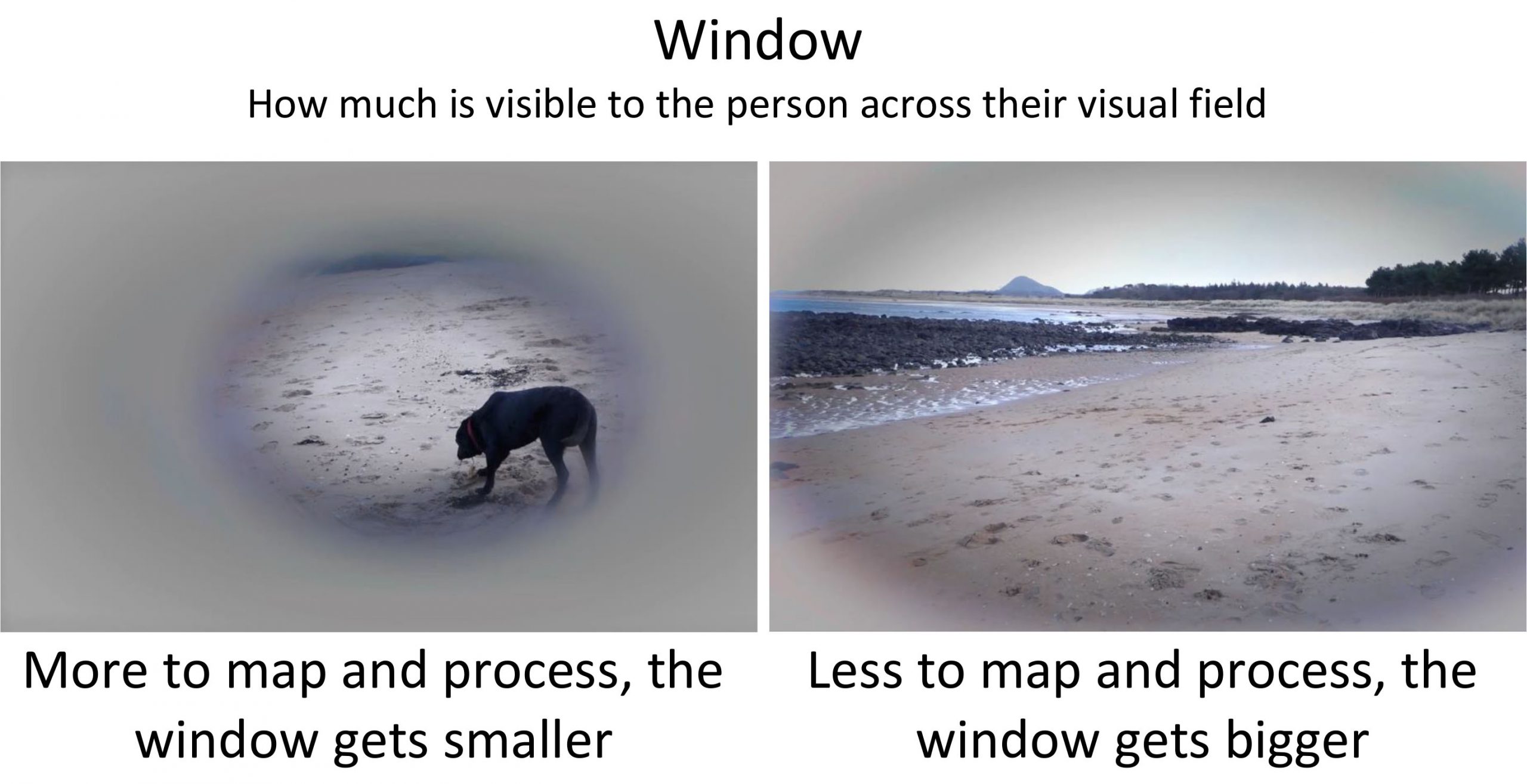
These films show what we have learned so far about how vision is altered, and the narrative reflects the accounts people have shared with us. We have tried to explain how this is different to typical vision, and a little bit about the altered brain process.
The films on the beach show quite obvious ranges in the window size. In the shop (to follow soon), because of how much there is to map and re-map, the window is always much smaller and the changes in the size of the window are less obvious.
Ongoing Project Work / Discussion Points
This project has highlighted some fascinating areas, and we will continue to explore and share our findings.
| 1 |
Our volunteers who all have dorsal stream dysfunction CVI viewed the images on a laptop computer in a quiet clear room. Some scenes, under a minute long, were too difficult for them to watch. The shop used in the film was a small well organised shop, and was closed for filming, with only a few project team members present. The volunteers commented on how fast they felt the film was moving through the shop, when it was filmed whilst walking slowly. |
| 2 |
Vision for the person with dorsal stream dysfunction appears to be something of a paradox.
For each person there will be optimum conditions, these are made up of:
As explained at the beginning of this page. These three areas seem to be key to seeing, learning and understanding for people affected by dorsal stream dysfunction. |
| 3 | In testing, at the beginning of the films, responses from our volunteers for the first few seconds were stronger, and the constant demands to refresh / remap seemed to be one of the biggest challenges. The beach images were considerably easier and more enjoyable. Where less was seen as an obstacle, for example one of the dogs was passed, very quickly the descriptions of what was visible showed a much larger window. In the shop, it was like the need to remap / refresh was just too much, the brain could not keep up and very quickly virtually nothing was recognisable and volunteers became tired and overwhelmed. This issue of the demand on the map to refresh needs further investigation. |
| 4 |
The visual disabilities of each of the testers were all slightly different, and some were clearly more severely affected than others, but were consistent with the varying ‘window-size’, which was personal to them (some seeing more some seeing less). We have plans to show the films to other people affected by dorsal stream dysfunction, and make more films. We feel there is a great deal more to learn from this approach of allowing people to explain their world and experiences in their own words. At the end of reviewing the films, we showed volunteers some of the films with the filter. On the whole, they could not tell the difference between the intact and the filtered images and were unaware of the filter, but remarkably the filter made a difference – our observers told us that the filter helped them to see better, and where the images were stressful, the filter made the images less demanding to study. For example, for the film in the shop, one tester could not finish watching a 1 minute clip, yet comfortably watched the same clip to the end, with the filter in place. |
One adult volunteer with dorsal stream dysfunction, when looking at part of one of the films shown below, could not identify anything in the image below:

The same person, looking at the image with the filter (below), was not aware there was a filter, but could read ‘University of St Andrews’.
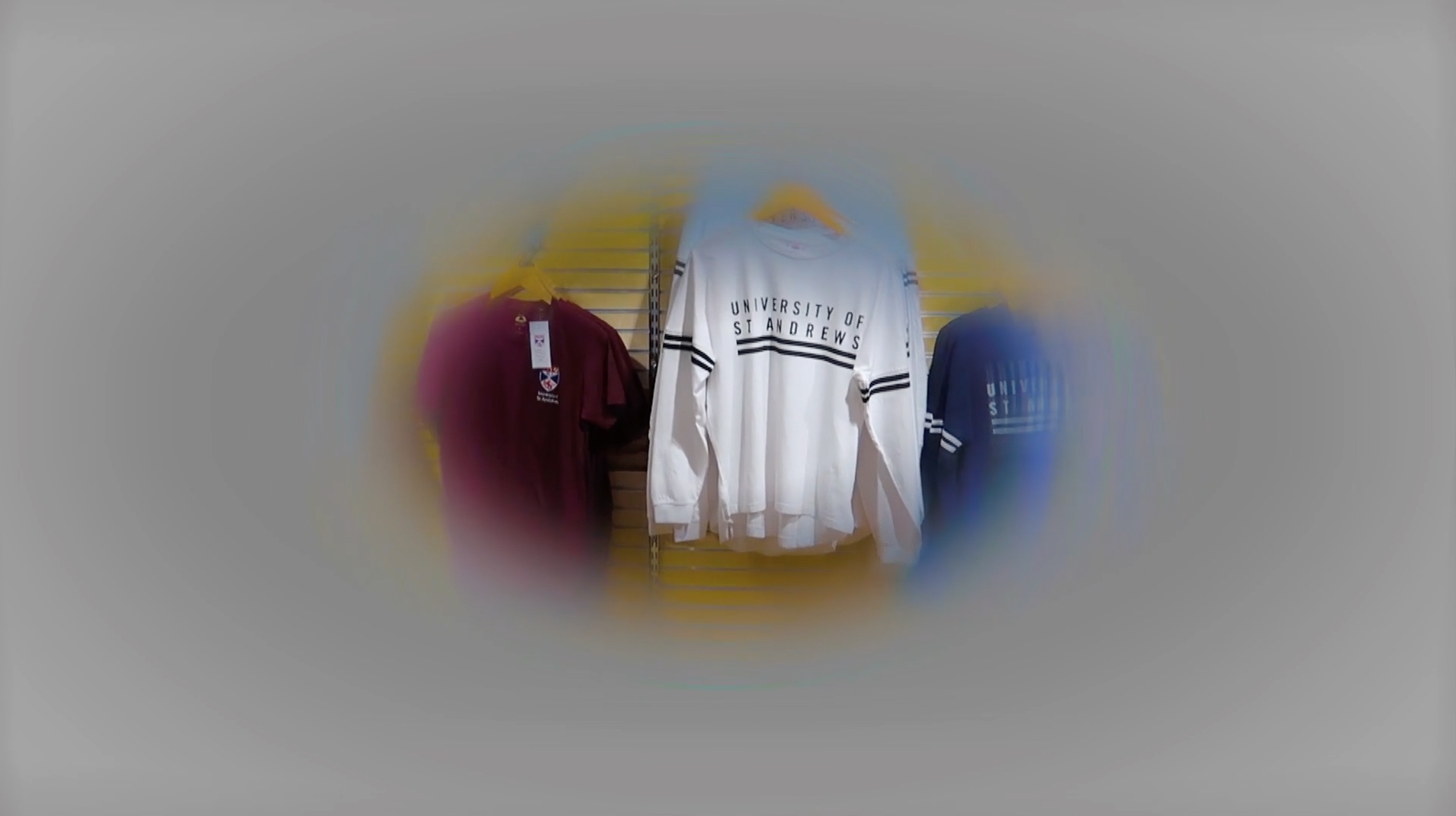
This is fascinating, and is something we will be looking at further. Might spectacles designed to reduce visual input from the periphery visual area actually help a person with these visual challenges recognise more of what they are seeing?
Their vision could be thought of as on a trajectory:
- 1 Vision good enough to clearly identify what is seen
- 2 Vision not good enough to clearly identify what is seen
- 3 Vision overwhelming creating stress and anxiety.
Ideally, vision should be good enough to see and recognise what is seen, and if it is not, salient changes need to be made in relation to:
- Environment
- Feeling
- Known
This project and partnership is ongoing, and in the future we look forward to showing further films and developing this work to help more people understand the experience of living with dorsal streamdysfunction.
References
1 CVI: ‘CVI is a verifiable visual dysfunction which cannot be attributed to disorders of the anterior visual pathways or any potentially co-occurring ocular visual impairment’ HEA Sakki et al, British Journal of Ophthalmology, Volume 102, Issue 4
2. See CVI Scotland’s Simultanagnosia Spectrum sections
Accounts of vision from an adult with acquired dorsal stream dysfunction
The following examples explain the incredibly complex difficulties people with CVI and dorsal streamdysfunction can face. We showed the following five photographs to adults with acquired CVI. We asked them to describe what they could see and how the imagery made them feel.

Supermarket
Supermarket (above)
“My first response was to pull away from the photo, as it was too much information and my automatic reaction was to try and get away from it. Then I struggled to find a point to focus on at all and my gaze just flitted around from one element to another, not looking at anything for long enough to fully process the image. I also wasn’t building up the scene as a whole.I was only able to do this when I forced my gaze to stop on something. Although it was difficult to find the best element to use for this. In the end I chose the yellow signs. Although this meant that my gaze was flicking from one to the other, as neither was very interesting or in a good position for me. Even when using the strategies I now have, I still found it difficult to build up the overall scene in this photo.
Thinking about the best way to explain it, it’s very similar to what it’s like to have restless leg syndrome. I’m not sure if you know what this is like, but your legs want to constantly move and it’s really hard to keep them still. This is what it is like with my vision when looking at a cluttered scene. My eyes just want to keep moving and to force them to stop takes a lot of effort and it just feels wrong and uncomfortable.”

Garden toys
Supermarket – garden toys (above)
“I was straight away drawn to the round hoops in the middle. If I tried to move my gaze away it quickly got drawn back to them. A bit like a magnet I guess. I also had lots of difficulty working out what is actually shown in the picture. I know that it’s a shop aisle with items being displayed, but I can’t really tell what any of them are. I am also not comfortable looking at this image for too long.”

Supermarket – flower display
Supermarket – flower display (above)
“This was an interesting response, I pulled away straight away, tried to avert my gaze from it completely and when forcing myself to look it, I closed my left eye without even thinking about it. There is nothing that really stands out that I want to focus on and in fact I find it very uncomfortable forcing myself to look at it at all. To be able to read anything took a big effort and all I could make it was the 3.50 on the left hand side of the image. I tried to count how many plants there were on one row and I couldn’t do it.When I stopped looking at the photo, but carried on thinking about it, I realised that because it was a shelf it might have horizontal lines. When I looked at it again I was able to see the yellow strips marking the shelves and was drawn to them. In fact, I couldn’t pull my gaze away from and it became the main focus point of the image. But I was only able to recognise that they were even there when I thought about the photo logically when not looking at it.”
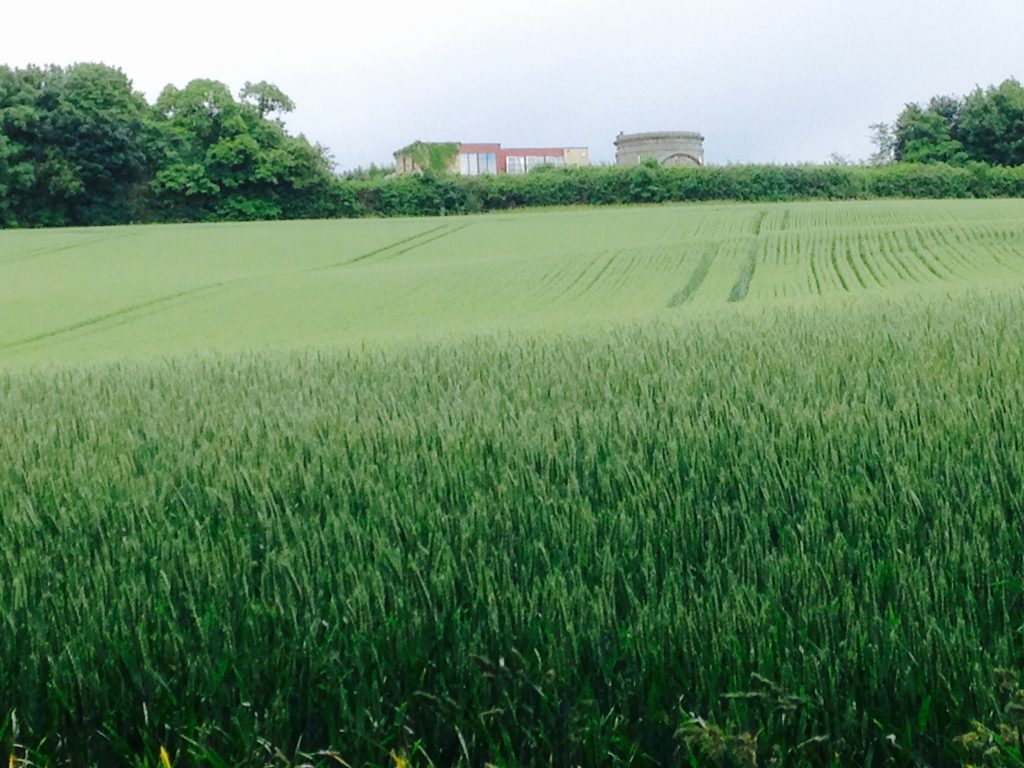
Open field
Open Field (above)
“Ahh calm! I could look at this image all day! I could study the buildings at the back of the image and they become a bit clearer. I also think I have seen every element in the photo – grass, hedges, trees, buildings and sky. Only a few colours and I can isolate each element easily. Although I was a little bit distracted by the lines in the grass.”
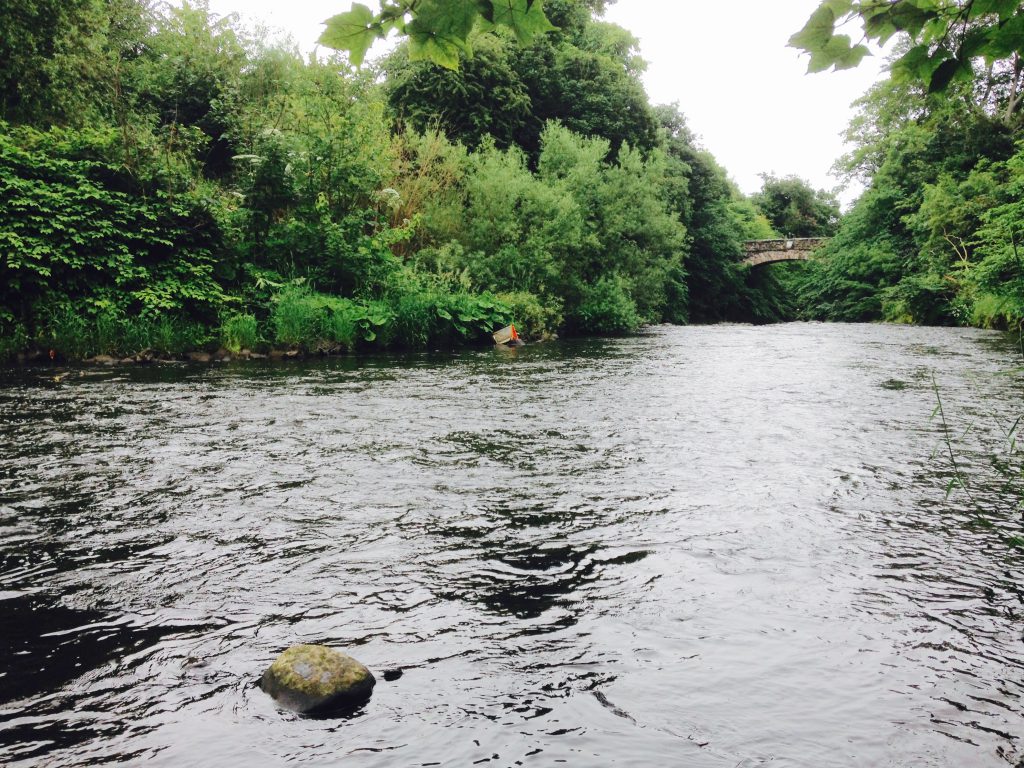
River
River (above)
“Another calming photo, although not as good as the last one. The detail that the ripple of the water creates makes it busier. I am also drawn to the item in the river in the middle of the photo, just in the bush line, that has a fleck of orange in it. I did get drawn back to that quite a lot, possibly because I couldn’t work out what it was. I thought I was able to see all the visual elements in the photo, however it did take me a while to see the bridge. I also didn’t see the rock at the front just to the left.”

